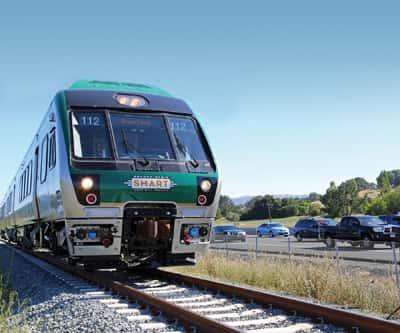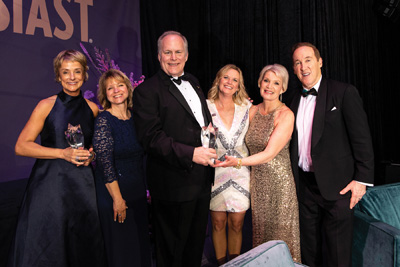Wine time is fun time, and here we are in fun season with parties and tasting and everything the holidays bring. We in the wine industry, along with the rest of the alcohol industry, get caught in between a rock and a hard spot. Obviously, none of us want to get involved with anything related to DUIs, but somehow we’re there anyway. The words “drink responsibly” sound wonderful, and we probably all think we do that, but is there a possibility that the more we drink the more responsible we become (or think we become)? I’ve never been a real advocate of big brother looking over us, but sometimes we find the enemy and it is us! The local and state police forces are working with several grants to do DUI and other violation checkpoints throughout the county on a random time and place basis, although they do announce when it will happen.
Having never been in trouble in a checkpoint, I must have a guardian angel on my side. And that angel must like wine also—so we’ve been lucky. Some do-gooders say checkpoints are aimed at those driving without a license, on a suspended license or some other infraction like no insurance. My reply is: Soooo! I’ve been through checkpoints in France and Australia, and you better thank God you’re treated a lot better here than there. Somehow I got the feeling there that the prevailing philosophy was guilty until proven innocent instead of the other way around.
Be that as it may, we’re in the alcohol business, and alcohol can cause drunkenness and driving impaired is an associated risk with that fact. You may not think of yourself as your brother’s keeper, but that’s what a designated driver is all about. It’s great when it works, and not so great when it doesn’t, like the case in Geyserville a couple of months ago when a designated driver crashed into an oncoming car. She was under the legal blood alcohol limit, but still crashed. And because she’d been wine tasting, we get blamed. People who consume alcohol regularly can be at the legal limit and still be fine, and others who aren’t used to consuming alcohol respond very differently. Many of our tasting room guests fit the last group of only occasionally drinking, and a little wine can go a long way. The North Coast wineries with $10 or more tasting fees certainly slow down that consumption rate, and $40+ wines will curtail some consumption, so how big is the problem compared to bars and restaurants serving hard liquor?
From my perspective, restaurants that charge $7+ for a glass of wine and only $5.50 for a gin and tonic are forcing me to go with the spirits instead of wine because I hate being ripped off, which is how most restaurant prices make me feel. A couple gin and tonics will beat out a couple of glasses of wine. But of course, if I want to continue to be my own wine-snobbish self, I might have a good glass of Sauvignon Blanc and pay the amount a bottle might cost me in a store just for a single glass.
All right, enough of this. So I think I have another crusade to start. My last two have both won, thank God. Those are the conjunctive label law requiring “Sonoma County” to be on all Sonoma County wine—be proud people!—and second, the passing of the Sonoma County Grapegrowers Association initiative to continue marketing and research at the county level. Maybe the bad times open people’s eyes. But anyway, congratulations Sonoma County wineries and growers for letting your minds lead the way, instead of your egos.
New crusade
I really hate to congratulate Kendall-Jackson for this idea, only because it was a tomato festival and not a grape/wine function, but it introduced the idea of having blood alcohol testers on site for people to use completely voluntarily. A great idea to promote self education of the DUI problem. The idea is fantastic, but the crowd, being more tomato lovers than wine lovers, are probably not your typical crowd at a wine function where over-consumption is more likely. By the way, why were wines being served, anyway? Oops. I know—to promote Kendall-Jackson wines—good idea.
I’ve mulled over in my mind the whole concept of DUI and tasting room responsibility and, even though I need to give it a lot more thought, I’m wondering what kind of support I’d have in “encouraging” every tasting room to have blood alcohol content testers available for patrons to use and to also use in the case of someone obviously intoxicated and prove the point. I think there are many people who’d appreciate this opportunity just to be safe. The DUI problem isn’t going to go away, and most of it won’t be wine-related (unless it’s in a paper bag and costs $3 or less.) I will certainly grant that the wine industry is a minimal problem with DUIs due to beer and spirits leading the way. However, society paints all of us in the alcohol business with the same brush.
OK, I need a disclaimer here. The wine industry, as we in God’s country think about it, doesn’t really deal in the segment that causes some of the image problems that some people still have. Remember the term “wino”? How about brown paper bags at Third and Howard Streets or the LaRose Hotel in Santa Rosa? Unfortunately, those products that made that perception are still around and are the biggest profit items in the business. Remember Thunderbird, Ripple, Mad Dog 20/20 and Annie Bed—oops—Green Springs? There’s the real money in the business, and they’re still being produced. As most recently reported, Richard’s Wild Irish Rose ($2, high alcohol wine) is still one of Constellation’s biggest profit items. Check all of the Gallo labels and really see where all the money’s being made.
Between now and my next column, I’d like some feedback about mandating tasting rooms to have BAC meter(s) available for voluntary use. What about bars also? Great idea. No big brother approach, but a little help with self discipline. I should also mention that your homework assignment will not cause any over-indulgence problems if followed correctly—and you weigh more than 100 pounds.



